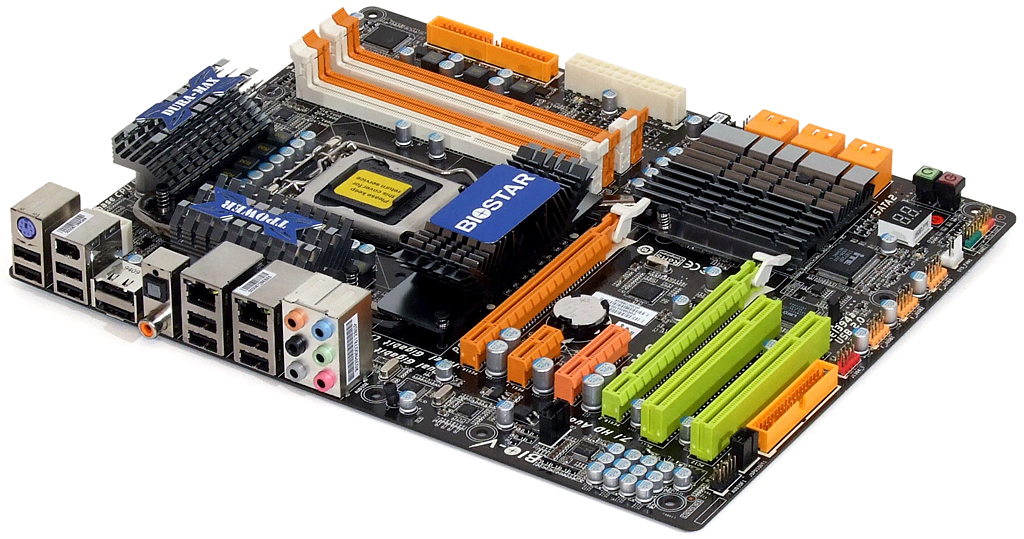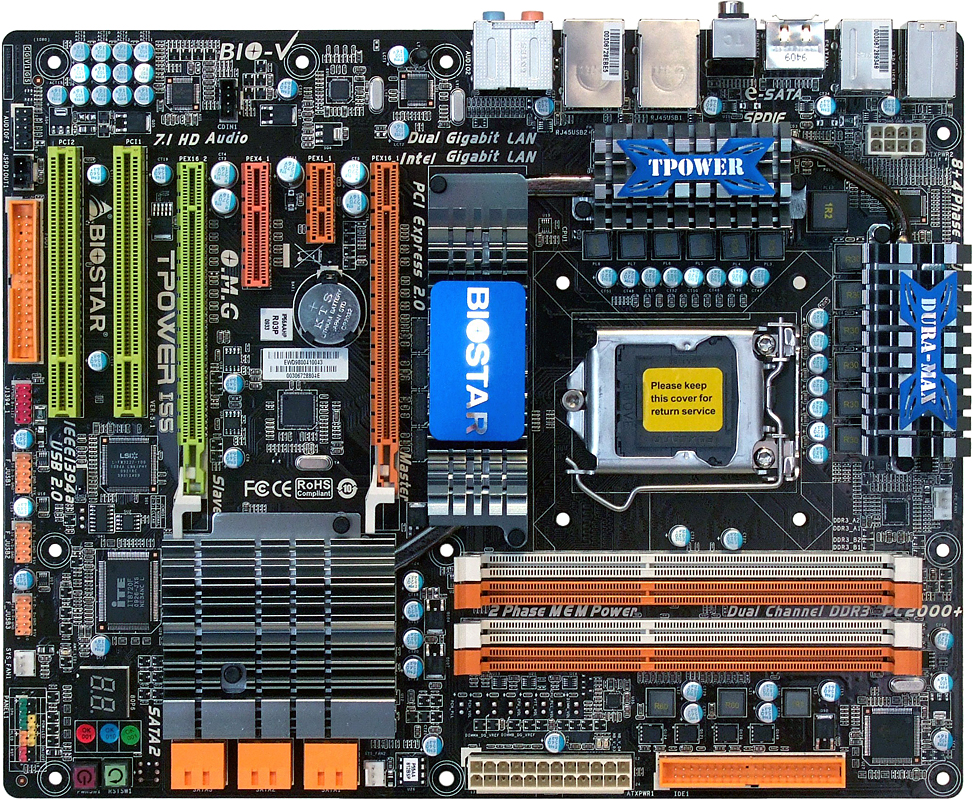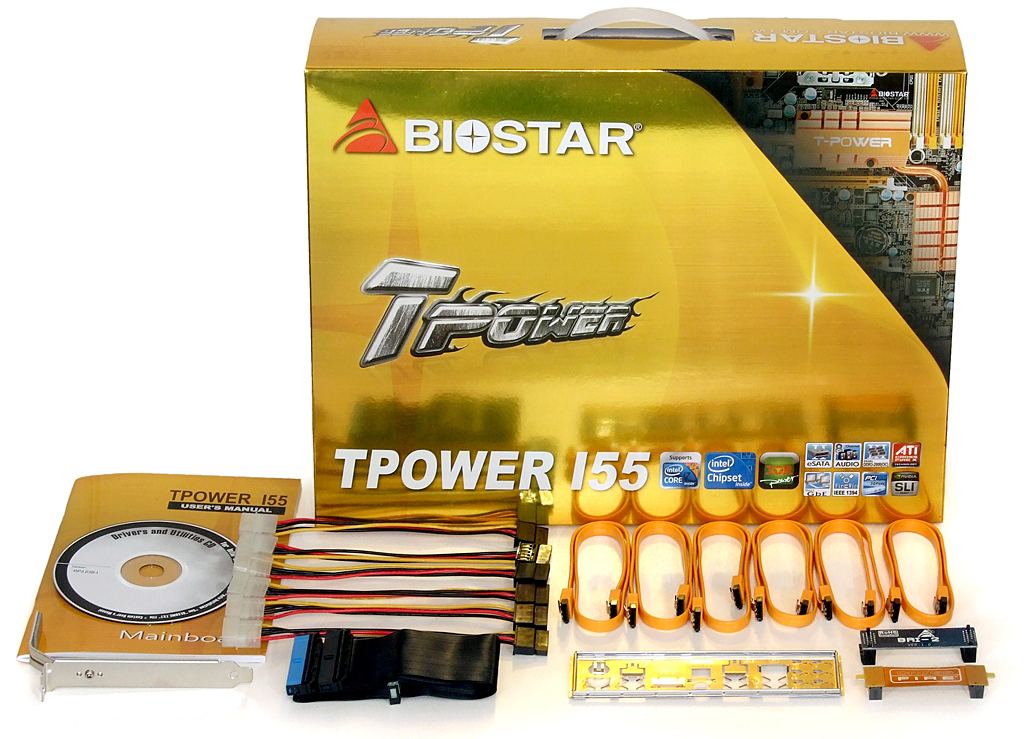Enthusiast P55: Eight LGA 1156 Boards Between $150 And $200
Biostar TPower I55
Biostar has been making waves in the overclocking community for a few years now, with several somewhat-dubious world record claims backed by hundreds of completely believable testimonials. Its TPower I55 certainly looks the part of a world-class overclocking motherboard, with the most open surface area of any motherboard heatpipe cooler we’ve recently seen.
Yet, this is no stripped-down overclocking demo board. At $184, the TPower I55 includes all the upper-range features we’d expect from a product in the upper-half of today’s budget range, such as dual eSATA ports, dual Gigabit Ethernet controllers, dual PCIe x16 slots with automatic x16/x1 to x8/x8 mode switching, a diagnostics display, and IEEE-1394 FireWire.
Unlike many of its competitors, Biostar uses an actual x4 connector for its x4 slot. But while the length of the connector doesn’t bother us, we wish the company would have at least used an open-ended version so that x8 RAID cards and other medium-bandwidth, longer-slot devices would fit. There’s certainly enough room between components for a longer card, if only the slot end were open.
A row of voltmeter pick-up points between the power connector and DIMM slots could prove handy for competitive overclockers, though they may be impossible to reach in some fully-assembled systems. Internal power and reset switches in the lower corner also serve the same community, but we noticed that the CLR_CMOS button was intentionally omitted, while its solder points are still present.
Biostar caters to the legacy software community with a floppy header needed by so many Windows XP RAID or AHCI users, and also caters to the legacy hardware community with an Ultra ATA connector and PCI slots.
We could complain about the position of the floppy connector, but so few people now require it that we’d rather concentrate on the front-panel audio header located even farther into the TPower I55’s bottom-rear corner. Cases with top-panel or upper-bay audio jacks have been common for several years, and running a cable the entire length of the board is rarely practical and occasionally impossible.
Yet, there are so many tradeoffs in any design that simply labeling a design as adequate begins to appear as a stamp of approval. However, Biostar doesn’t quite get there, and it’s not because of its front-panel audio connector. A more serious problem we encountered was that its CPU socket was so close to the DIMM slots that we couldn’t install four memory modules with our moderately-thin Thermalright MUX-120 cooler in its standard orientation. We had to reverse our CPU fan to compensate, placing it on the back of the cooler (blowing forward) in order to complete our four-DIMM stability test.
Get Tom's Hardware's best news and in-depth reviews, straight to your inbox.
BIOS
Biostar’s O.N.E. menu is a little convoluted, but readers will find additional screen shots in the photo album of today’s article. Its main menu features BCLK and QPI frequency plus CPU- and DRAM-ratio controls.
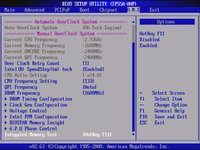
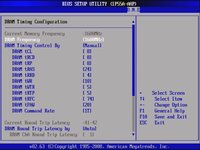
Users who would like to set only a few memory timings manually will find that enabling the manual-control option forces all timings to be set manually.
PCIe clock and skew controls are found under the Clock Gen Configuration submenu.
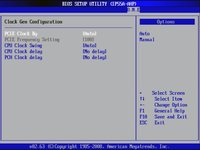
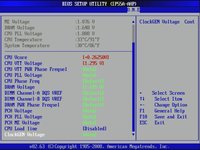
In addition to the basics, the TPower I55 Voltage Control submenu adds advanced settings such as power-phase frequency, DRAM-reference voltage, and clock-generator voltage.
Up to 10 BIOS configurations can be stored as user profiles.
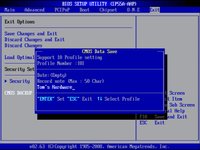
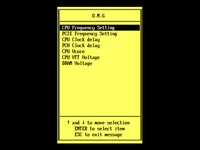
New overclockers afraid of the BIOS graphical user interface (GUI) can instead change key values using Biostar’s O.M.G. interface. We didn’t find it any more convenient or less scary.
Accessories
In a further attempt to shed the budget-brand image it established several years ago, Biostar packs its TPower I55 installation kit with a full set of six latching SATA cables and graphics card bridges for both CrossFire and SLI.
